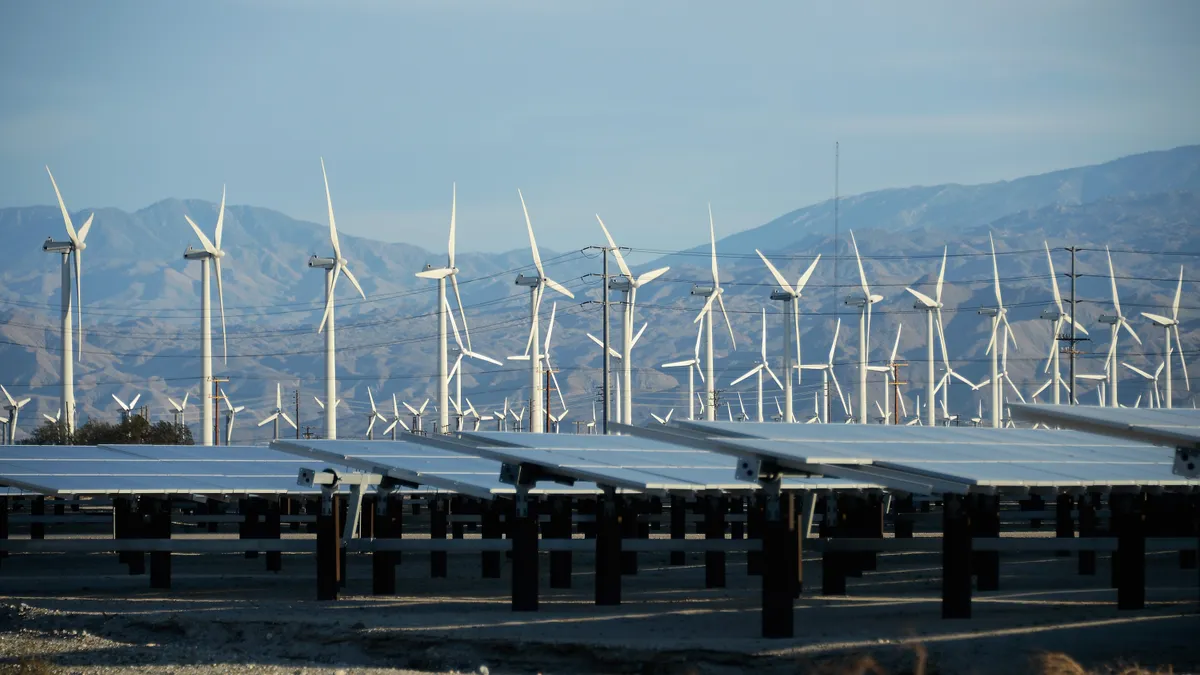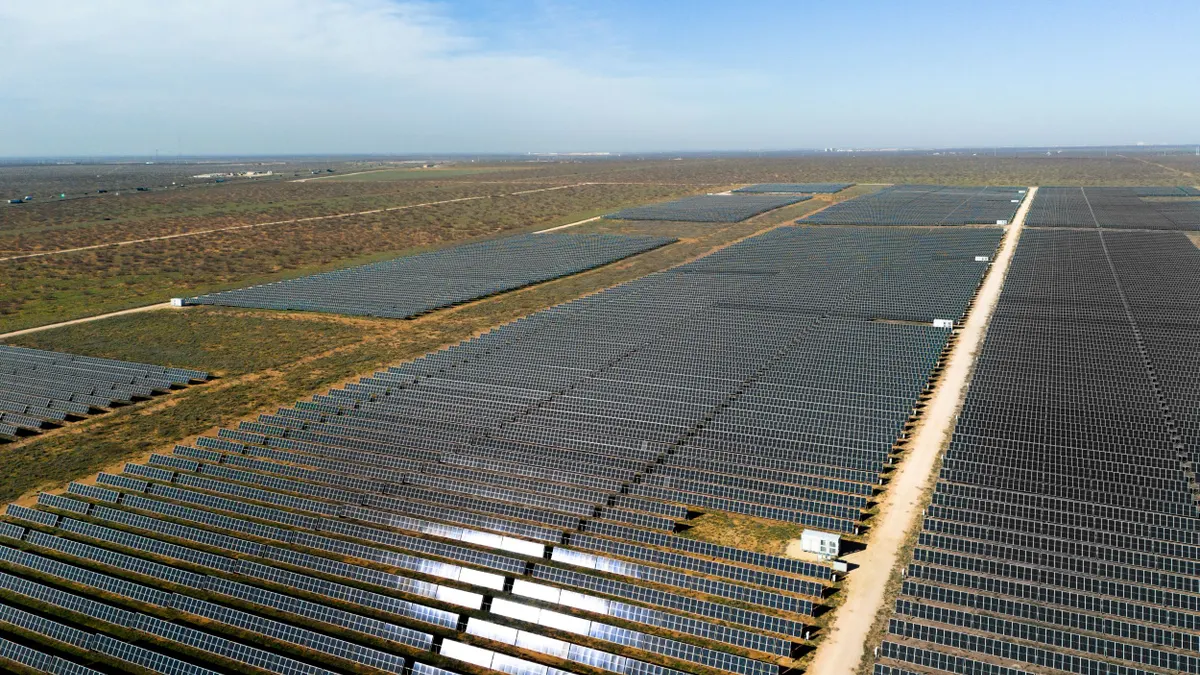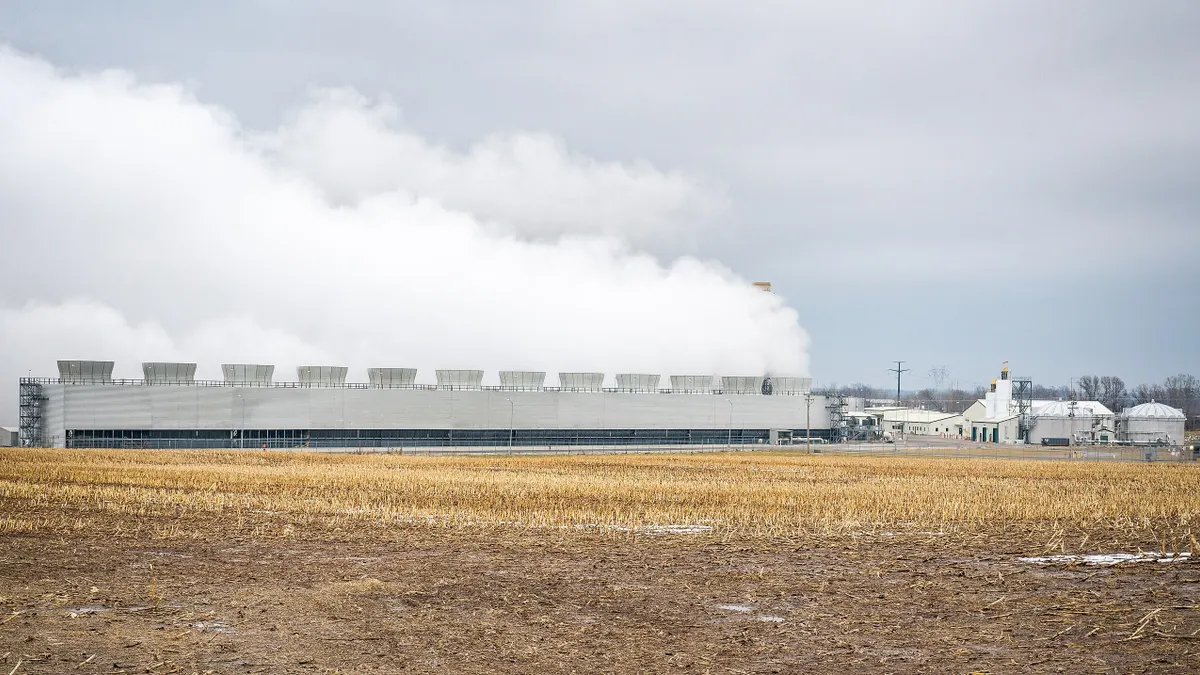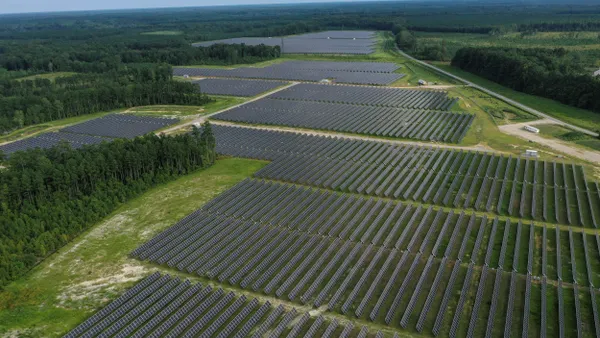Managing investments in renewable energy has, until recently, represented a sort of niche specialization that attracted only a small number of financial professionals. But over the last six months, a rapid increase in demand for such investments has driven fierce competition among firm managers working in the field.
"At times it felt like there was more capital than good companies" to invest in, said Andy Lubershane, managing director of research for investment firm Energy Impact Partners. While markets have cooled in recent weeks, he said, quality companies and projects still command a premium. "There's still a lot of capital chasing good companies."
Although renewable energy deployment has increased steadily over the last decade, funding from venture capital and private equity had largely stagnated until last year, according to Raj Prabhu, Mercom Capital Group consulting firm co-founder and CEO. In 2021, private investment in renewable energy reached the highest levels since the Great Recession in 2008, according to data compiled by Mercom.
Venture capital and private equity funding in U.S. solar nearly tripled in 2021, bringing $4.5 billion in funds to the industry compared to $1.2 billion in 2020. U.S. battery storage, smart grid and energy efficiency companies attracted $10.1 billion in venture capital, compared to $2.6 billion in 2020.
But renewable energy did attract $4 billion in annual private investment in the late 2000s before activity in the sector crashed, Prabhu said. So the question now, he said, is whether this recent rush of investment is here to stay — or whether it's heading for another collapse.
Clean Tech 1.0
The first wave of investment in renewable energy, Lubershane recalled, was of a somewhat different nature than today's. "Clean Tech 1.0," as it's been dubbed, largely attracted successful tech entrepreneurs and investors looking to invest their software earnings in the next big thing. Solar, just getting started, seemed to fit the bill.
"[T]he failures that did occur, I think, scared venture-stage investors away from this concept of clean tech, particularly hard clean tech, for five to seven years."

Andy Lubershane
Managing director of research, Energy Impact Partners
The trouble with this theory is that hard tech like solar is far more capital intensive than software — it takes more money to develop and deploy the technology and to get to the point where it starts to generate earnings. At the same time, the Chinese government began to pump money into manufacturing photovoltaic solar on their home turf, causing earnings for U.S.solar companies to fall rapidly and killing off competing technologies, Prabhu said. And then the Great Recession hit in 2008.
"There was a lot of money lost in that period," Lubershane said. "There were some winners from that period —Tesla is an example. Nest, a few companies like First Solar and SunPower made it. So I wouldn't call it an unmitigated failure, but the failures that did occur I think scared venture-stage investors away from this concept of clean tech, particularly hard clean tech, for five to seven years."
Markets began to shift once again around 2013-2014 — not because of a change in technology, Prabhu said, but because the kind of investor buying into the renewable energy sector changed. Instead of venture capitalists looking to finance disruptive new technologies, private and corporate investors began to take an interest in solar. The downward trajectory of development costs juxtaposed against rising demand meant there was both a need for financing and a significant opportunity for financial returns in the future.
"Investors started investing in installers, integrators and solar financing," Prabhu said. "The funding has really shifted and it's never looked back."
Even now, with investment in solar posting the highest figures seen in 15 years, the majority of that money went to project developers, Prabhu said.
Market motivations
The recent growth of environmental, social and governance (ESG) funds has driven additional cash into the renewable space, Prabhu said. While the history of ESG also goes back a decade or more, over the last 12-18 months, he said, interest in this mission-driven investing has grown substantially.
Climate and social consciousness has impacted investments beyond funds marketed specifically as ESG, according to Jamal Hagler, vice president of research at the American Investment Council. Private equity funds across the board increasingly take ESG factors into account, he said. Even some large pension funds have begun to set targets for acquiring renewable energy in order to decarbonize their own portfolios, Lubershane said.
"The main driver is economics. There is money to be made in renewables, and that's why firms are investing there."

Mark Voccola
Co-head of Ardian Infrastructure U.S.
But, strictly speaking, this isn't because investors aim to reduce emissions and prevent climate change, Lubershane said. While that may be part of the motivation, Lubershane and other experts believe market factors and a growing belief that it's not a matter of "if," but "when" civilization will transition away from fossil fuels are likely more instrumental in driving investment in renewable energy — and no one wants to get left behind. Corporate buyers and large energy users no longer want to purchase fossil fuels; states and cities around the country have adopted renewable energy standards. Customers want to buy climate-conscious products, making investments in renewable energy a useful marketing tool.
"The main driver is economics. There is money to be made in renewables, and that's why firms are investing there," said Mark Voccola, co-head of Ardian Infrastructure U.S., an infrastructure investment company.
Rapid comeback
On top of these forces, Covid-19 played a role in pushing investment in renewable energy to present, near-record levels, Prabhu continued. Interest remained strong throughout the pandemic, but for a period during the worst of the lockdowns, the deal-making ground to a stop. Delayed projects and pent-up demand overflowed into 2021.
In addition to the recovery from Covid-19, which brought investment in renewable development roaring back, venture capital has slowly made its way back into renewable energy companies, adding further dollars to the totals seen in 2021. Mission-oriented funds such as Bill Gate's Breakthrough Energy Ventures have dominated this area for some time now, focusing on federally-funded technologies that are looking for pilot, demonstration and commercialization opportunities, Lubershane said.
"I can't tell you how many billion will be invested next year, but it's going to be on an upward trajectory."

Raj Prabhu
Co-founder and CEO, Mercom Capital Group
They're increasingly joined by strategic partnerships involving companies from legacy industries such as oil, gas and real estate — partnerships led by businesses looking both to earn returns, and acquire assets they could use to decarbonize their own operations. And some of the first round of venture capitalists are now gradually making their way back into the arena now that returns seem more assured in light of growing policy support in the U.S., Lubershane said.
"Solar projects are so hard to buy right now, which is interesting because 8-10 years ago, nobody would touch them," Prabhu said. "Now there are 5-10 different funds fighting to buy a project if it comes on sale."
Upward trajectory
The heated market, Prabhu said, has led to some speculation that renewable energy represents a financial "bubble." But outside ESG funds themselves — which Prabhu believes may take a hit as regulatory scrutiny increases — he doesn't believe this is likely.
"The private sector is doing a lot to invest in these areas, and I think that will continue no matter what the environment is," Hagler agreed.
While there's a tremendous appetite for renewable energy assets among investors at the moment, Voccola said, demand for renewable energy also continues to grow, suggesting there should be no shortage of places to put renewable energy capital in the future. Solar and wind energy have represented some of the fastest growing sectors of the U.S. economy for the past decade now, and yet they still account for a mere fraction of the country's total energy portfolio. There's also increased interest in emerging energy resources including battery storage, advanced nuclear, hydrogen, electrification and the decarbonization of heavy industry.
The market is also much more experienced with renewable energy investments than it was 10-15 years ago, Voccola said. This means that while there is more competition for the best assets, it's also much easier to close deals than in the past.
Add conflict in Europe and the increased precarity of Russian oil and gas into the mix — which Lubershane believes may push even more investors away from traditional energy assets and toward clean tech — and it's likely the future will bring even more interest in renewable energy from investors.
"I can't tell you how many billion will be invested next year, but it's going to be on an upward trajectory," Prabhu said.






















